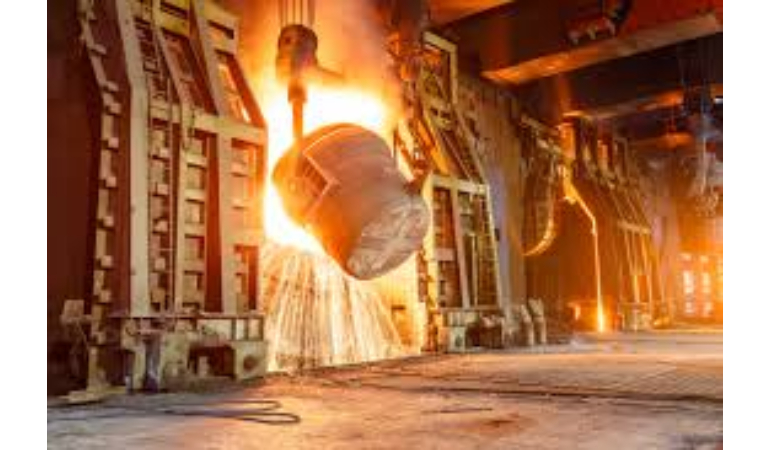Despite support for the technology at the 2023 COP28 climate conference, a new report from the Institute of Energy Economics and Financial Analysis (IEEFA) indicates that carbon capture use and storage (CCUS) is unlikely to play a major role in steel decarbonization.
There are other, more efficient ways for the steel industry to cut emissions.
Key Takeaways:
CCUS has a history of underperformance and failure after being implemented in a variety of sectors for several decades.
The world’s sole commercial-scale CCUS plant for gas-based steel production has extremely low capture rates. Almost nothing is planned for commercial-scale CCUS plants for coal-based steelmaking, and none exist anywhere in the world.
Major steel producers are replacing their coal-consuming blast furnaces with direct reduced iron (DRI)-based steelmaking. CCUS risks falling behind, just as it did in other industries, such as electricity production.
It appears increasingly likely that steel consumers will not want coal in their supply chains going forward due to CCUS’s subpar performance. Plans for decarbonization by steel companies that insist that CCUS will be important should raise red flags for investors.
Challenges:
The steel industry is seeing a rise in the use of green hydrogen to power the production of steel from DRI. According to IEEFA’s research, this technology provides steelmakers with a far more promising route to reduce their emissions than CCUS. This is especially true when combined with electric arc furnaces (EAFs) powered by renewable electricity. Despite this, a large number of global steel producers continue to insist that CCUS will help them reduce their carbon footprint.
Secondly, doubts regarding the long-term viability of geological CO2 storage increase the risks associated with CCUS. These include considerable financial, technological, and environmental hazards. Each CCUS project is distinct, which restricts technological advancement and cost savings. The cost of implementing carbon capture has not decreased much in decades, but the cost of technologies like battery storage and renewable energy has fallen and will continue to fall.
Thirdly, the CCUS capture rates are not comparable.
The low capture rate of CCUS is a critical problem frequently overlooked. CCUS initiatives have had persistent difficulty achieving the desired capture rates. Furthermore, targeted carbon capture typically emits far less carbon than total carbon emissions. Low-CO2 capturing installations cannot be considered decarbonized.
The impact on the auto sector:
“Hard to abate” and “carbon capture and storage” are frequently used interchangeably. Some steelmakers appear to be using the term “hard to abate” as a justification for plans that are indefinite in the future decades while largely carrying on with business as usual.
Low capture rates will prevent any CCUS installations from sufficiently reducing the carbon footprint of steel production to meet the growing demand for truly green steel from steel consumers. Automakers are already executing buy orders for environmentally friendly steel produced with nearly zero emissions by employing green hydrogen. Soon, more precise definitions of what “green steel” really is should be anticipated.
Use case:
Less than 20% of all Scope 1 and Scope 2 emissions from Emirates Steel Arkan’s DRI-based steel plant were accounted for by the industry’s first and only commercial-scale CCUS plant, the Al Reyadah CCUS facility in the United Arab Emirates, in 2020 and 2021. Moreover, the captured CO2 is put to use in enhanced oil recovery (EOR), which increases the amount of fossil fuels produced and carbon emissions released.
Emirates Steel Arkan is now utilizing alternative technology for steel decarbonization, which it seems to think is more successful. The business is deploying green hydrogen to launch the first DRI-EAF pilot project.
CCUS is not likely to contribute to decarbonization in situations where there are better and more affordable alternatives. The production of genuinely low-carbon steel is made possible by the use of green hydrogen in DRI and renewable energy to run EAFs, a feat that CCUS appears unable to duplicate.
Analyst and co-authors notes:
Co-author and Global Steel Financial Analyst for IEEFA Soroush Basirat states: “No other commercial-scale carbon capture facilities for steelmaking have been built, despite being operational for eight years.
Lead Steel Financial Analyst at IEEFA Simon Nicholas said, “Major steelmakers’ plans for CCUS tend to be vague and push commercial-scale implementation of the technology off into the 2040s. With almost 50 years of existence, CCUS technology has a track record of severe underperformance.”
“The International Energy Agency (IEA) has historically relied on CCUS to achieve decarbonization, but it now seems to be beginning to change its perspective on the long-term decarbonization of the steel sector. In upcoming updates, we anticipate that the IEA will keep downgrading the contribution that CCUS is expected to make to the decarbonization of steel,” adds Nicholas.

